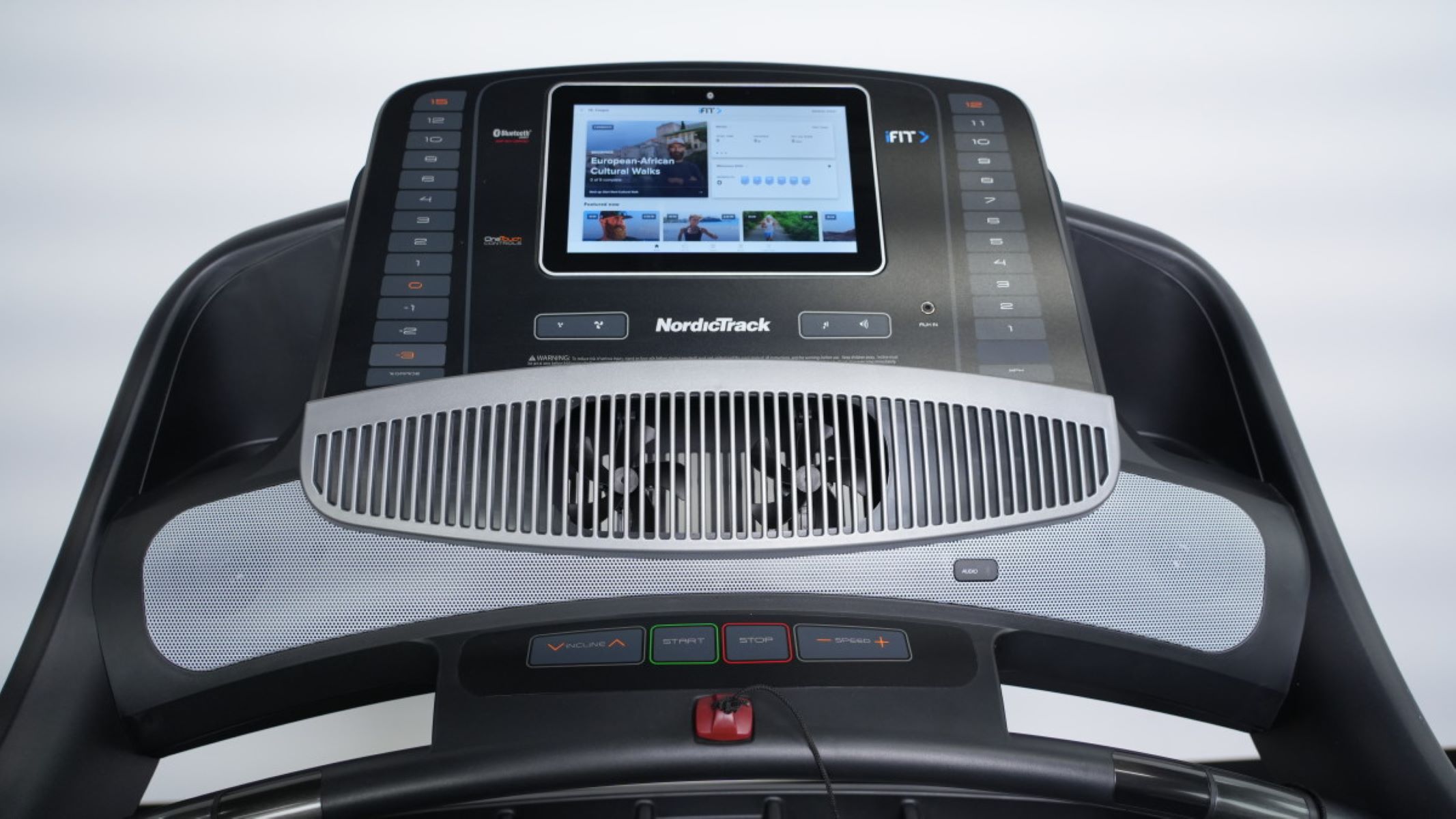

Featured
How Many Amps Does Treadmill Use
Modified: August 19, 2023
Discover how many amps a Featured treadmill uses and ensure you have the right electrical requirements for your home. Get answers and insights today.
Introduction
Welcome to the world of fitness, where treadmills have become a staple of home and gym workouts. Treadmills offer a convenient and effective way to stay active, burn calories, and improve cardiovascular health. As fitness enthusiasts, it’s important to understand the various aspects of our exercise equipment, including the amount of power they consume.
One crucial factor that determines the energy consumption of a treadmill is the amperage it uses during operation. Amperage, also known as current, measures the flow of electric charge through a circuit. It represents the rate at which electricity is being used by the device.
Understanding the amperage of your treadmill can be helpful for a variety of reasons. Firstly, it allows you to ensure that your electrical system can handle the power requirements of the treadmill. Secondly, it enables you to estimate the energy consumption and associated costs. Lastly, having knowledge about amperage can guide you in making environmentally conscious decisions and implementing energy-saving practices.
In this article, we will delve into the world of treadmill amperage. We will explore the factors that affect the amperage, the typical range of amperage for treadmills, and some valuable tips for reducing the amperage of your treadmill. So, whether you are a treadmill owner or considering purchasing one, let’s unravel the mystery of amperage and discover how it impacts your fitness journey and energy consumption.
Understanding Amperage
Amperage, symbolized by the letter “A” or “I,” is a fundamental concept in electrical engineering. It measures the rate at which electric charge flows through a circuit. In simpler terms, it represents the amount of current being used by an electrical device, including treadmills.
Amperage is analogous to the flow of water through a pipe. If there is a larger pipe, more water can flow through it at once. Similarly, if the amperage is higher, more electric current can flow through a circuit. This flow of electric charge powers the motor and other components of a treadmill, enabling it to function.
Amperage can vary depending on the specific model and features of a treadmill. Some treadmills may have a higher amperage requirement due to more powerful motors or advanced functionality, while others may have a lower amperage requirement. It is important to consult the manufacturer’s specifications or user manual to determine the amperage of your treadmill.
Amperage is measured in amperes (A) or milliamperes (mA). One ampere is equal to 1,000 milliamperes. For example, if a treadmill has an amperage rating of 10A, it means that it draws 10 amps of electrical current during operation.
It is worth noting that amperage alone does not provide a complete picture of a treadmill’s power consumption. To accurately assess energy usage, factors such as voltage and wattage need to be considered as well. However, understanding the amperage of your treadmill is a significant step towards gaining insights into its electrical requirements.
Factors Affecting Treadmill Amperage
Several factors contribute to the amperage requirements of a treadmill. Understanding these factors can help you determine why different treadmill models may have varying amperage ratings. Let’s explore the key factors that can affect treadmill amperage:
- Motor Power: The power of the treadmill’s motor has a direct impact on the amperage it requires. Higher-powered motors tend to draw more current to generate the necessary torque and speed for running or walking.
- Incline Functionality: Treadmills that offer incline functionality require more power to adjust the angle of the running deck. This additional power demand can result in higher amperage requirements.
- Deck Size and Belt Type: The size of the running deck and the type of belt used on the treadmill can influence amperage. Larger decks and thicker belts may require more power to move smoothly, resulting in higher amperage consumption.
- Display Screens and Electronics: Treadmill models equipped with advanced display screens, built-in entertainment systems, or other electronic features may have higher amperage needs. These additional electronics consume power in addition to the motor’s requirements.
- User Weight and Speed: The weight of the user and the speed at which they are running or walking can indirectly affect the amperage. Heavier users or faster speeds may require the motor to work harder, resulting in increased current draw.
It’s important to consider these factors when choosing a treadmill, especially if you have specific performance requirements or energy-saving goals. Additionally, consulting the manufacturer’s specifications or reaching out to customer support can provide valuable insights into the amperage requirements of different treadmill models.
By understanding the factors affecting treadmill amperage, you can make an informed decision when selecting a treadmill that meets your fitness needs while considering your electrical system’s capabilities.
Typical Amp Range for Treadmills
When it comes to treadmill amperage, it is important to note that the specific amp rating can vary significantly depending on the make, model, and features of the treadmill. However, there is a general range of amperage that most treadmills fall within.
The typical amp range for residential treadmills is usually between 10 and 20 amps. This range can accommodate a wide range of treadmill sizes, motor powers, and usage requirements. It is important to consult the manufacturer’s specifications or user manual to determine the exact amperage rating for your specific treadmill model.
Smaller, compact treadmills designed for light to moderate use typically fall at the lower end of the amp range, around 10 to 12 amps. These treadmills are suitable for walking and casual jogging and usually have smaller motors and fewer extra features.
On the other hand, larger, heavy-duty treadmills with more powerful motors and advanced features, such as high incline functionality or interactive displays, may require higher amperage ratings. These treadmills can range from 15 to 20 amps or even higher in some cases.
It’s worth noting that commercial-grade treadmills used in professional gyms or fitness centers may have even higher amperage requirements due to their robust motors and constant use. These treadmills can often draw between 20 and 30 amps.
When considering the amperage range for treadmills, it’s essential to evaluate your electrical system’s capabilities. Ensure that your home’s electrical circuitry is equipped to handle the amperage requirements of the treadmill you choose. It may be necessary to consult with an electrician to assess and potentially upgrade your electrical infrastructure if needed.
By understanding the typical amp range for treadmills, you can choose a model that fits your fitness needs while ensuring compatibility with your electrical system.
Energy Consumption and Costs
As responsible consumers, it’s important to consider the energy consumption and associated costs of using a treadmill. While the amperage of a treadmill provides insight into its power requirements, it is also essential to understand the energy consumption and potential costs involved.
The energy consumption of a treadmill depends on various factors, including the amperage, usage duration, and motor efficiency. Treadmills with higher amperage ratings generally consume more energy during operation. Additionally, running the treadmill at higher speeds or using features like incline functionality can increase energy consumption.
To estimate the energy consumption of your treadmill, you can multiply its amperage rating by the voltage of your electrical system. For example, if your treadmill has an amperage rating of 15A and your voltage is 120V, the power consumption would be 1,800 watts, or 1.8 kilowatts (kW). Keep in mind that this is just an estimation, and actual energy usage may vary depending on usage patterns and motor efficiency.
Calculating the energy costs associated with running a treadmill involves considering the electricity rate charged by your utility provider. Most utility companies charge per kilowatt-hour (kWh) of energy consumed. By multiplying the energy consumption of your treadmill (in kilowatts) by the electricity rate (per kWh), you can estimate the cost of using your treadmill.
It’s important to note that electricity rates can vary depending on your location and provider. In some regions, electricity rates may be higher during peak hours or for excessive energy usage. Consider checking your utility bill or contacting your utility provider to determine the exact electricity rate applicable to your situation.
By understanding the energy consumption and associated costs, you can make informed decisions about your treadmill usage. Being conscious of your treadmill’s energy consumption not only helps you manage your electricity costs but also contributes to a more sustainable lifestyle by reducing your carbon footprint.
Tips for Reducing Treadmill Amperage
If you’re looking to reduce the amperage and energy consumption of your treadmill, there are several strategies you can implement. Not only will these tips help you save on electricity costs, but they can also contribute to a more sustainable and environmentally-friendly fitness routine. Here are some effective tips for reducing treadmill amperage:
- Choose an Energy-Efficient Model: When purchasing a new treadmill, look for models with energy-saving features. These may include efficient motor designs, power-saving modes, or adjustable speed and incline settings that optimize energy usage.
- Utilize Energy-Saving Modes: Many treadmills offer energy-saving modes or power-saving options. These modes typically reduce the motor’s speed or adjust other settings to minimize energy consumption. Make sure to activate these modes when appropriate to save on power usage.
- Optimize Speed and Incline: Running a treadmill at higher speeds or steep incline levels can significantly increase amperage and energy consumption. Whenever possible, choose lower speeds or more moderate incline settings to minimize power usage.
- Shorten Workout Duration: Consider reducing the duration of your treadmill workouts. While exercise is important, shorter sessions can still provide health benefits while minimizing energy consumption. You can also supplement your treadmill workouts with other low-energy activities like outdoor running or walking.
- Use Standby or Shutdown Modes: When the treadmill is not in use, utilize standby or shutdown modes to further reduce power usage. This prevents unnecessary energy consumption, especially if the treadmill has display screens or other electronic components.
- Maintain Proper Maintenance: Ensure your treadmill is properly maintained to optimize its efficiency. Keep the running deck clean, lubricate it as per the manufacturer’s recommendations, and regularly check for any loose or worn-out components. A well-maintained treadmill operates more efficiently and consumes less power.
Implementing these tips can help you reduce the amperage and energy consumption of your treadmill without compromising your fitness routine. Not only will you save on electricity costs, but you will also contribute to a more sustainable and eco-friendly lifestyle.
Conclusion
Understanding the amperage of your treadmill and its impact on energy consumption is essential for both practical and environmental reasons. By knowing the factors that affect treadmill amperage, you can choose a treadmill that suits your needs and ensure that your electrical system can handle the power requirements.
While the typical amp range for treadmills can vary, it is generally between 10 and 20 amps for residential models. Commercial-grade treadmills used in professional settings may have higher amperage requirements. It’s important to consider these ranges and consult the manufacturer’s specifications for accurate information.
Being aware of the energy consumption and associated costs can help you budget and make informed decisions about your treadmill usage. By implementing energy-saving strategies like choosing an energy-efficient model, utilizing power-saving modes, optimizing speed and incline, and maintaining proper maintenance, you can reduce amperage and minimize your environmental impact.
Remember, taking steps to reduce the amperage and energy consumption of your treadmill not only benefits your wallet but also contributes to a more sustainable future. By being mindful of your energy usage and implementing eco-friendly practices, you can enjoy the benefits of your treadmill while minimizing the impact on the planet.









